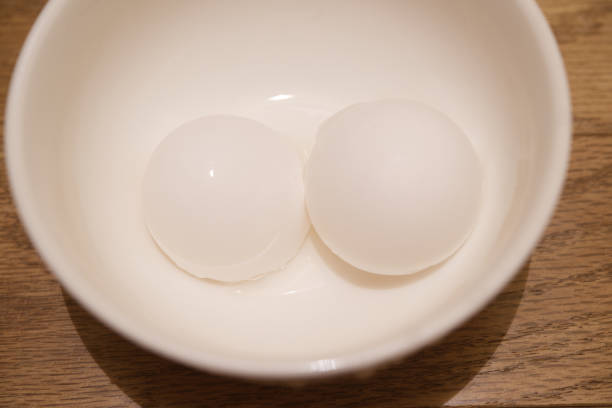Introduction
Japan is often celebrated for its technological progress, refined traditions, and breathtaking natural beauty. Yet beyond its flawless image lies a philosophy that accepts imperfection. The concept of broken and beautiful Japon reflects the way Japanese culture embraces fragility, repair, and renewal. This idea is deeply rooted in history, art, and daily life.
Rather than hiding cracks, the culture highlights them. Instead of discarding damaged things, they are repaired with dignity. This perspective allows Japan to remain both resilient and graceful. Understanding this concept requires diving into aesthetics, philosophy, art forms, and the resilience of its people.
The Philosophy Behind Broken and Beautiful Japon
Japanese philosophy has long acknowledged impermanence and imperfection. Unlike cultures that often equate beauty with perfection, Japan sees value in flaws. This mindset is expressed in concepts such as Wabi-Sabi and Kintsugi.
- Wabi-Sabi teaches the beauty of imperfection, transience, and simplicity.
- Kintsugi is the art of repairing broken pottery with lacquer and gold, transforming cracks into symbols of resilience.
Together, these ideas embody broken and beautiful Japon. They remind us that every scar tells a story and every fracture holds meaning.
Wabi-Sabi: The Beauty of Imperfection
At the heart of Japanese aesthetics lies Wabi-Sabi. This principle values natural cycles, asymmetry, and aged beauty. Unlike Western ideals of flawless symmetry, Wabi-Sabi finds harmony in the imperfect.
- A cracked tea bowl is not ruined but cherished.
- A weathered garden stone carries quiet dignity.
- A faded kimono speaks of memory and time.
Through this lens, imperfection becomes a vital part of beauty. Broken and beautiful Japon is reflected in this ability to see value in what others may discard.
Kintsugi: Turning Cracks Into Art
Perhaps the most striking representation of this philosophy is Kintsugi, which literally means “golden joinery.” In this technique, broken pottery is mended using lacquer dusted with powdered gold or silver.
Rather than hiding the break, the repair highlights it. The once-broken object now carries a history visible in golden veins. The idea symbolizes resilience, transformation, and renewal. Each crack tells a story of endurance, making the object more valuable than before.
Kintsugi has become globally recognized as a metaphor for healing, resilience, and embracing scars. It reflects the heart of broken and beautiful Japon.
The Spirit of Resilience in Japanese History
The philosophy of finding beauty in brokenness is not confined to art. It also mirrors Japan’s history. Throughout centuries, the nation has endured wars, natural disasters, and societal upheavals. Yet, each time, it rose stronger while carrying its scars with dignity.
- Earthquakes and tsunamis have devastated cities, but rebuilding often included cultural preservation.
- Hiroshima and Nagasaki, once destroyed by atomic bombs, became global symbols of peace and recovery.
- Economic challenges in the 1990s tested resilience, but the society adapted with creativity and perseverance.
These historical moments highlight how broken and beautiful Japon extends beyond objects into collective identity.
Broken and Beautiful Japon in Traditional Arts
Japanese art forms embody this philosophy of imperfection.
- Tea Ceremony (Chanoyu): Simplicity, rustic tools, and imperfect bowls are celebrated.
- Ikebana (Flower Arrangement): Uneven stems and asymmetry create harmony.
- Haiku Poetry: Focuses on fleeting moments, highlighting transience and fragility.
- Zen Gardens: Weathered stones, moss, and irregular shapes symbolize time and endurance.
Each of these arts reflects an acceptance of imperfection and beauty in brokenness.
Architecture and Brokenness in Japon
Architecture in Japan also carries the balance of fragility and strength. Traditional wooden houses are designed to flex during earthquakes, making them resilient yet delicate. Shrines and temples rebuilt after disasters honor the past while adapting to the present.
Modern Japanese architects combine minimalist structures with natural imperfections. Even in futuristic Tokyo, touches of traditional broken-and-beautiful aesthetics can be seen. This blending of old and new echoes the nation’s philosophy.
Broken and Beautiful Japon in Modern Society
Today, the philosophy extends into daily life and popular culture. From fashion to lifestyle choices, the idea of embracing flaws remains relevant.
- Minimalist living encourages people to focus on essentials and let go of excess.
- Street fashion often mixes vintage, worn, and modern styles in bold harmony.
- Contemporary art incorporates recycled and broken materials, giving them new meaning.
Even technology companies have adopted elements of traditional design, reminding the world that modern Japan remains rooted in its cultural essence.
The Psychological Meaning of Broken and Beautiful Japon
Beyond art and design, this philosophy influences psychology. In many ways, it encourages resilience in individuals. Accepting flaws, scars, and setbacks allows personal growth.
Psychologists often reference Kintsugi as a healing metaphor. People recovering from trauma or loss may find strength in the idea that scars add depth to their lives. By embracing imperfections, individuals discover empowerment.
Thus, broken and beautiful Japon becomes not only cultural but also deeply personal.
How Japon Inspires the World
The global fascination with Japanese aesthetics continues to grow. Concepts like Wabi-Sabi, Kintsugi, and minimalist living have influenced Western interior design, art, and mindfulness practices.
Yoga studios, meditation centers, and therapy practices often adopt these principles. Designers worldwide incorporate natural imperfection into fashion, ceramics, and furniture. Through this cultural exchange, broken and beautiful Japon has become a global language of resilience and beauty.
Broken and Beautiful Japon in Literature and Film
Japanese literature and cinema often explore themes of fragility and resilience. Writers and filmmakers reflect the tension between destruction and renewal.
- Novels by Haruki Murakami highlight characters who find beauty in loneliness and imperfection.
- Studio Ghibli films frequently depict broken worlds that transform into places of harmony.
- Post-war literature captures Japan’s recovery while acknowledging scars.
The portrayal of imperfection in stories reinforces the spirit of broken and beautiful Japon.
Lessons from Broken and Beautiful Japon
The philosophy teaches valuable lessons that apply to everyone:
- Embrace imperfection. Life is not flawless, yet imperfections make it unique.
- Value resilience. Scars, whether personal or cultural, are signs of strength.
- Live simply. Beauty exists in minimalism and authenticity.
- Find harmony. Balance between fragility and strength is essential.
These lessons make broken and beautiful Japon a timeless guide for life.
The Future of Broken and Beautiful Japon
As the world faces global challenges—climate change, social inequality, and technological shifts—the philosophy of resilience and beauty in imperfection becomes even more relevant. Japan’s approach reminds us that cracks in societies and individuals can be pathways to renewal.
Future generations will continue to draw from these traditions, adapting them into new cultural forms. Broken and beautiful Japon will remain an enduring concept that bridges the past with the future.
Frequently Asked Questions (FAQs)
Q1: What does “broken and beautiful Japon” mean?
It refers to Japan’s cultural philosophy of embracing imperfection and finding beauty in fragility, resilience, and repair.
Q2: How is this philosophy shown in Japanese culture?
Through Wabi-Sabi, Kintsugi, tea ceremonies, Zen gardens, architecture, and traditional art forms.
Q3: What is Kintsugi?
It is the Japanese art of repairing broken pottery with gold or silver, making cracks part of the object’s beauty.
Q4: Why is imperfection valued in Japan?
Because it symbolizes transience, resilience, and authenticity, which are central to Japanese aesthetics.
Q5: How does this philosophy inspire people globally?
It influences art, design, psychology, and mindfulness practices, encouraging people to accept flaws and embrace renewal.

